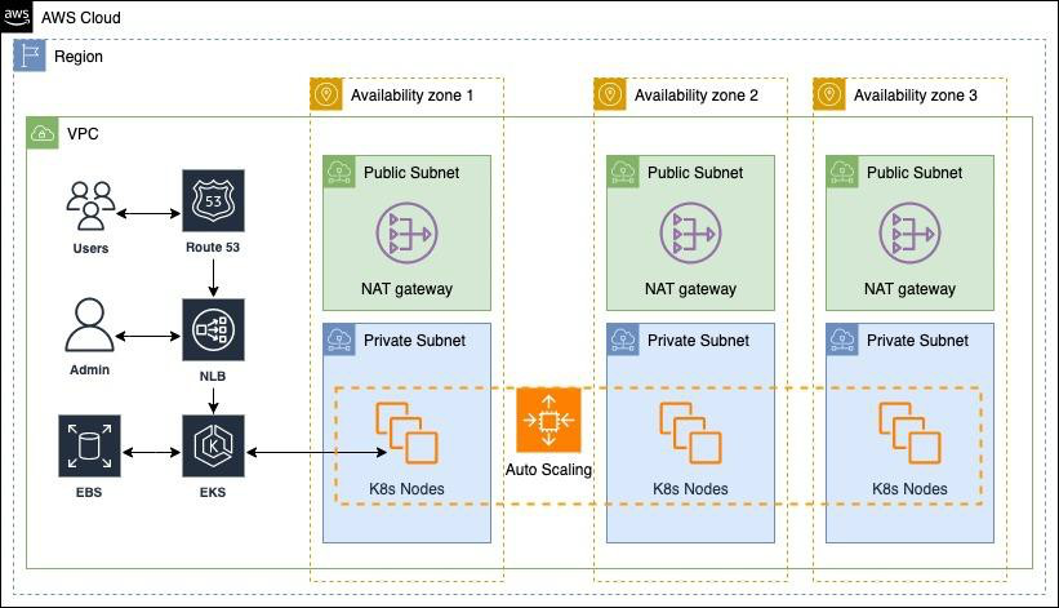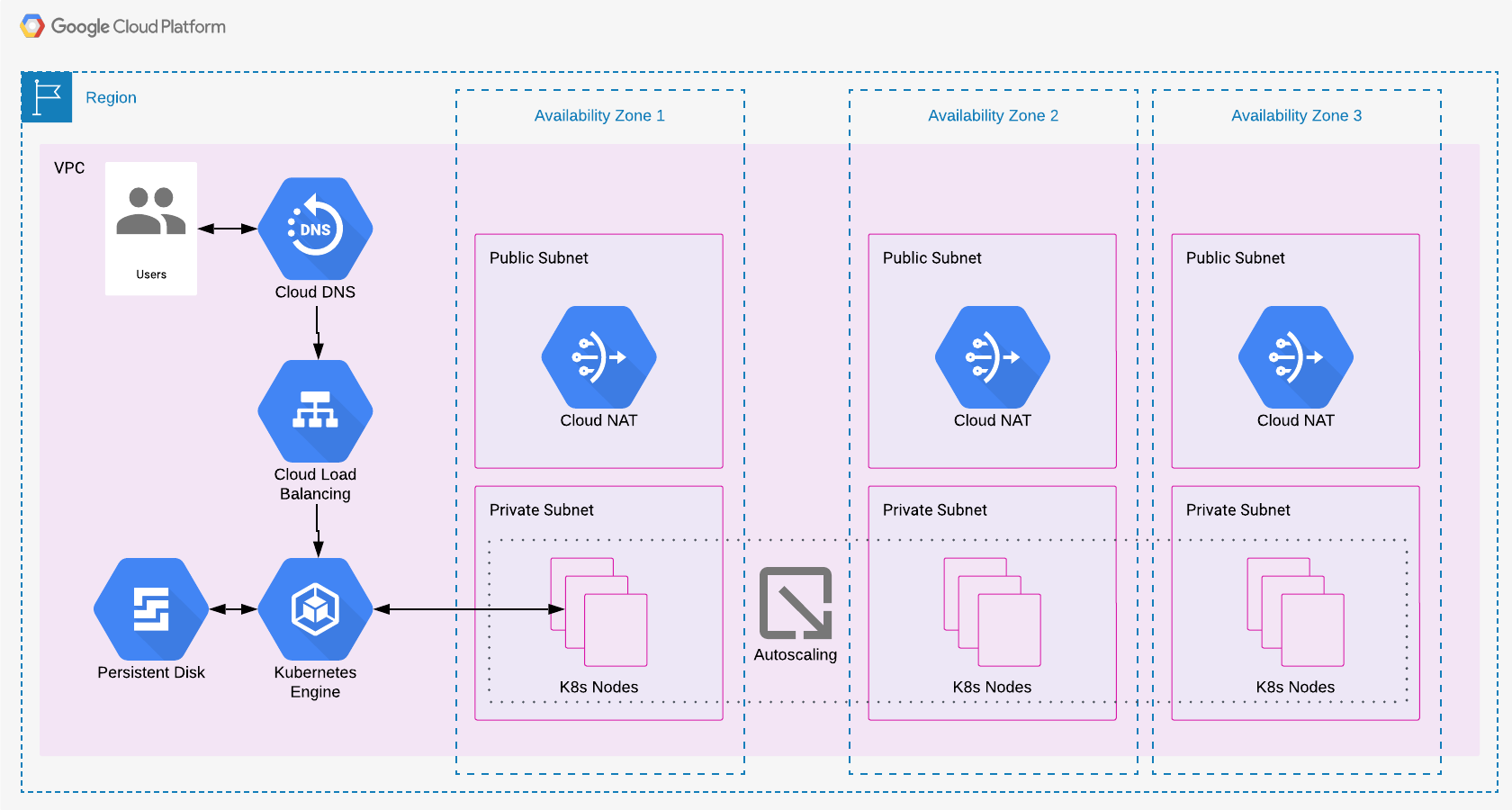Multi-Availability Zone Architecture
Cogynt may be deployed to a multi-availability zone (multi-AZ) architecture, which supports fault-tolerance and high availability. In this architecture, Cogynt is situated behind a network load balancer (NLB) and is scaled across two or more availability zones (AZs).
Multi-AZ is suited for running a production instance of Cogynt. It is supported for both Amazon Web Services (AWS) and Google Cloud Platform (GCP).
AWS Multi-AZ Architecture
The components of an AWS multi-AZ configuration are as follows:
- The internet gateway allows communication between instances in your VPC and the internet.
- NAT gateways in each public subnet enable Amazon Elastic Compute Cloud (Amazon EC2) in private subnets to access the internet.
- A network load balancer distributes web traffic across an automatically-scaling group of Amazon EC2 instances.
- Amazon EC2 instances access shared data in an Amazon Elastic Block Storage (EBS) file system using mount targets in each AZ.
- The Amazon EBS provides access to shared, unstructured data such as config, themes, and plugins.

GCP Multi-AZ Architecture
The components of a GCP multi-AZ configuration are as follows:
- The internet gateway allows communication between instances in your VPC and the internet.
- A cloud NAT (NAT gateway) in each public subnet enables virtual machines (VMs) in private subnets to access the internet.
- A network load balancer distributes web traffic across an automatically-scaling group of VMs.
- VM instances access shared data in a persistent disk file system using mount targets in each AZ.
- The persistent disk provides access to shared, unstructured data such as config, themes, and plugins.
